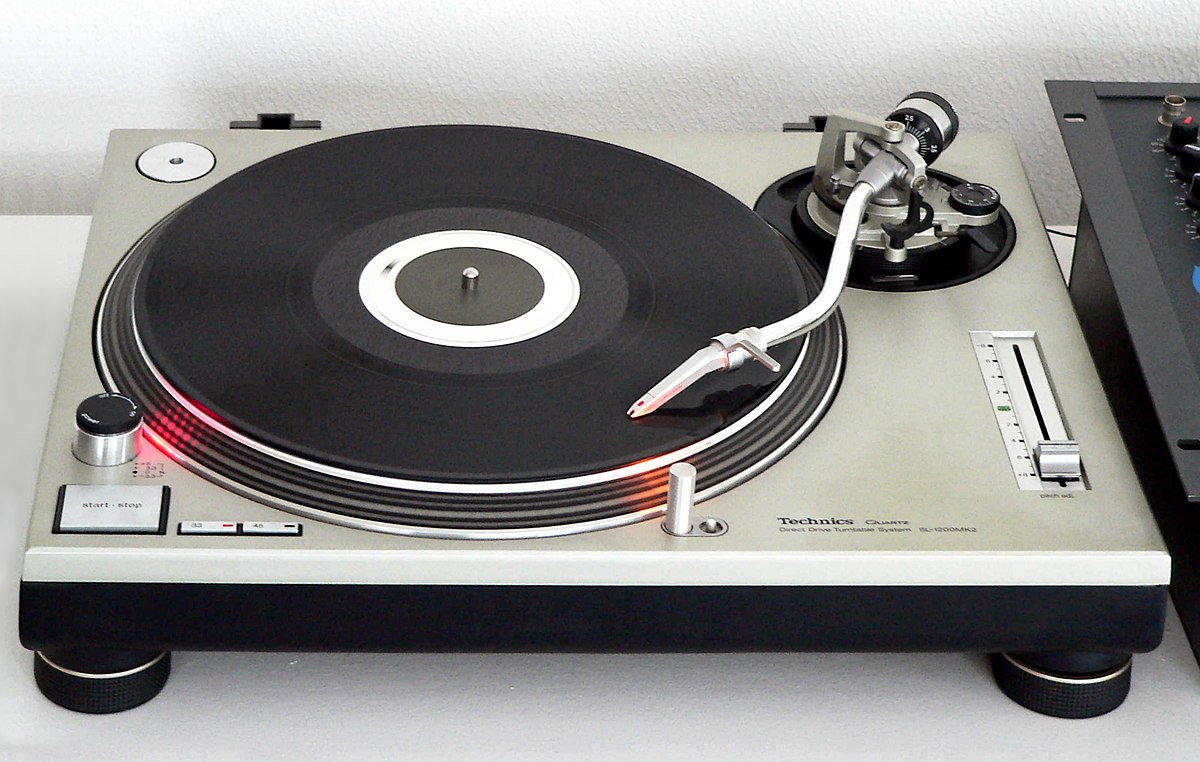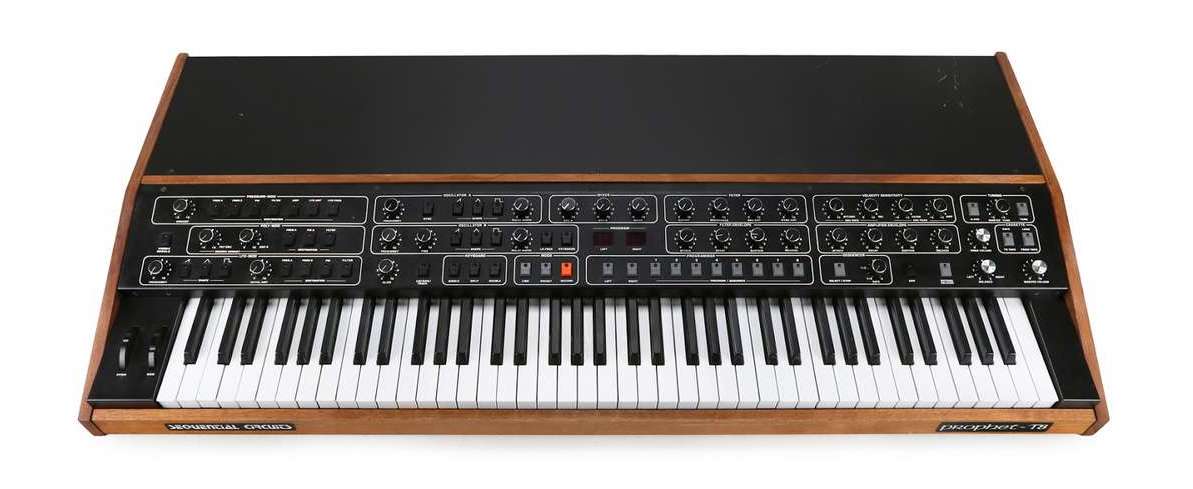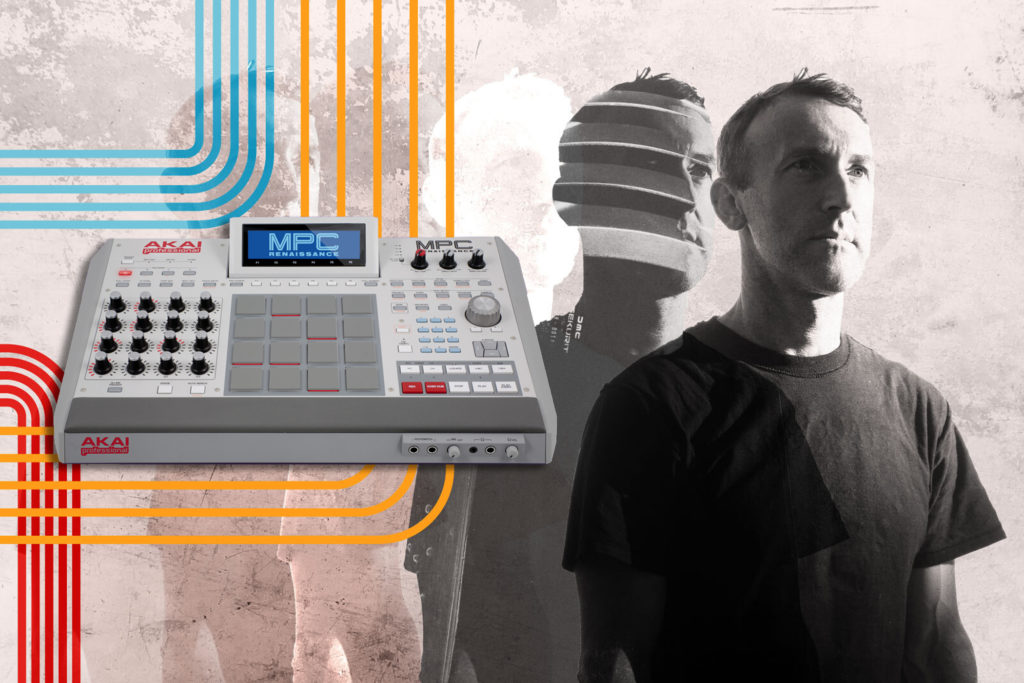+ Create and arrange original, instrumental hip-hop music from sampling pioneer RJD2 in his Soundfly course, RJD2: From Samples to Songs.
RJD2 started making his own music in 1993. He earned his first official production slot five years later. Since then he has released a slew of solo and collaborative albums, racked up hundreds of production and remix credits for artists like the late MF DOOM (as Viktor Vaughn), crafted the theme song for an Emmy- and Golden Globe-winning TV show, and toured around the world recreating his intricate sample compositions for enthusiastic audiences.
Now, after nearly two decades as a professional musician, he wants to share his musical knowledge with the world.
Origin Story and Early DJ Battles
Born in May of 1976, RJD2 moved from Eugene, Oregon, to Columbus, Ohio, at a young age. His high school years were spent at a specialized music school that taught music theory, but this proved to be a stiff and rather joyless pursuit. It was the vibrant DJ scene in Columbus that awakened his true passions for music-making.
After starting out with two Technics 1200s and a crummy mixer, he elevated his status as a DJ by earning first place in the 1997 Ohio Hip-Hop Expo DJ battle.

RJ’s dedication to DJing also went beyond battling. Though not necessarily an avid sample digger at first, he always aimed to set himself apart by dropping unique records into his live sets. “If all you’re playing is the newest 12-inches that dropped in 1996, all DJ sets are functionally equivalent,” he says.
MPC Acquisition, Early Production, and Def Jux
1997 also marked the year he saved up enough money to purchase an MPC 2000XL, which led to an extended period of hyperfocus and deep study. RJ once estimated that he spent between five and eight hours per day on the machine from 1997 to the release of Deadringer in 2002.
Though it took about five years to reach Deadringer levels of proficiency, he earned some early production credits as the DJ/producer for Copywrite and Camu Tao’s group MHz, aka Megahertz. Cuts like “World Premier” (1998) and “Rocket Science” (1999) were raw, impressive early achievements, while his solo track “Silver Fox” — which later appeared on Deadringer — was featured on an early Def Jux sampler in 2000.
Deadringer, Since We Last Spoke, and Testing MPC Limits
When RJ started working on his Def Jux debut, Deadringer, he had both a killer selection of records to sample and a deep understanding of his MPC. As a result he was determined to go beyond the limits of anything previously created with the sampler.
“I was trying to push that machine literally further than anybody had,” he says. “I’m not saying I achieved that, but the attempt was to push it as far as anybody had ever pushed it technically.”
Now, with an arsenal of equipment like a Sequential Circuits Prophet T8, a Moog Polymoog, and the Yamaha CS-80 — which appeared prominently in the Song Exploder-featured “Games You Can Win” and the Dame Fortune leadoff “A Portal Inward” — he’s able to fully appreciate both the unique qualities of the MPC and the feats he was able to accomplish with a basic, single sampler setup.

“I didn’t realize the scope of that limitation until I started buying instruments and microphones and getting into tracking live instruments,” he says.
Deadringer was released by Def Jux in the summer of 2002 with modest expectations, but it quickly found an audience and earned rave reviews from the likes of HipHopDX, Pitchfork, and Spin, and its legacy endures. Tracks “Ghostwriter” and “Smoke & Mirrors” continue to find new generations of listeners while amassing massive play counts on streaming.
RJ’s sophomore solo effort, Since We Last Spoke — yet another attempt at pushing the MPC’s capabilities to breaking point — made its way on Spin’s “Top 40 Albums of 2004.”
It also featured the multi-talented producer singing over some sublime MPC production on the cover/remake of Labi Siffre’s “Bless The Telephone,” titled “Making Days Longer.”
Further Solo Adventures, Magnificent City, Mad Men, and Beyond
RJ’s subsequent solo efforts The Third Hand (2007), The Colossus (2010), and More Is Than Isn’t (2013) proved that he had plenty of creative energy left to share with the world. The Third Hand moved away from sampling and focused much more on live instruments played by RJ, The Colossus featured “A Son’s Cycle” — a three-beat switch-up posse cut in the same style as Gang Starr’s “Speak Ya Clout” — while More Is Than Isn’t included the beautiful Phonte Coleman collaboration “Temperamental.”
All three albums made their way onto the Billboard charts.
Not to be overlooked during his post-Since We Last Spoke stretch are a myriad of side projects and collaborative efforts, including Magnificent City — an acclaimed 2006 collaborative project with Freestyle Fellowship, Haiku D’Etat, and A-Team member as well as Project Blowed co-founder Aceyalone. The album earned praise for its distinct production and captivating lyricism and the instrumental for the finale “A Beautiful Mine” became the theme for AMC’s Emmy- and Golden Globe-winning series Mad Men.
From Student to Teacher
In the years following More Is Than Isn’t, RJ put out the collaboration STS x RJD2 (2015) with rapper STS, the 2016 and 2020 solo efforts Dame Fortune and The Fun Ones, and Tendrils (2018) under his alter ego The Insane Warrior. Remarkably, his MPC knowledge only continued to grow and evolve during that time.
Though he continues to learn new MPC tricks and techniques after nearly a quarter century of using the machine, these days he’s equally excited to expand his abilities in many other areas of music.
“I know a fraction of what there is to know about playing bass, or playing drums, or guitar, keys, or mic’ing any of these things, or programming synths,” he says. “In addition to extracting the last little bits of information out of the MPC, there’s a point at which the law of diminishing returns kicks in. And I don’t really care that much anymore about squeezing the last bit of juice out of that machine, because I want to get a new thing on board that is going to give me a whole new set of sounds.”
The amount of gear RJ has become proficient in is staggering. In previous interviews, he has spoken at length of his DIY synth collection, using MIDI and a Yamaha CP-80 Electric Grand Piano to trigger a Nord Electro and Korg Polysix, and layering all three of those machines together through a Leslie speaker cabinet.
Achieving a high level of skill in multiple disciplines has come with an increasing desire to share his knowledge and expertise with others, as demonstrated in videos like Scratch DJ Academy’s brief but impressive 2014 live demo of RJ deconstructing “Someone’s Second Kiss” from Since We Last Spoke. Though the video was well done, it is rather pithy and there seemed to be further room for exploring video content and online teaching materials after the video’s release.
Making of a Soundfly Course With DIY Improvisation
That opportunity presented itself when Soundfly asked RJ to create a full online course. Though the offer was intriguing, the COVID-19 pandemic presented the unique challenge of maintaining safety for all involved parties. As a result RJ decided to embrace a somewhat unconventional process instead of having a camera crew in his house.
“Technically I did all the filming myself,” he says. “It’s the same way I do my albums, which is kind of like a one-man show type of thing. I did all of the video engineering and miking, and there was nobody there. It was just me.”
In true DIY spirit, RJ and the folks at Soundfly would log into Google Meet or Zoom while RJ duct-taped his phone to the back of the DSLR camera so everyone could make sure the video had the appropriate framing and quality. “When they had a good idea that the framing was right and we checked the levels, then I would basically hit record on ProTools,” he says.
The end result was RJD2: From Samples to Songs, an intuitive course released in late-July 2021 that includes more than 35 videos — including a very in-depth breakdown of the creation of and process behind “Smoke & Mirrors” — and a slew of other resources. The videos cover everything from his philosophy on record collecting and sample searching to a walkthrough of all aspects of the song making process. It even touches on the sampling techniques of other influential producers who RJ studied for inspiration.
The Final Takeaway
While RJ certainly wants students who take the course to pick up technical elements of the craft, he also encourages students to break rules, push boundaries, and generally avoid the temptation to play it safe when they set out to make their own recordings — whatever their current skill level is today.
“If you’re doing this right, you’re going to continually progress as an artist, and you’re going to kind of pick up more and more tools in your arsenal of things you can do,” he says. “And that only happens by living at that edge of limitation, of learning and forcing yourself to take whatever you can do to the utmost extreme.”
Ready for even more?
Check out Soundfly’s variety of courses on songwriting, mixing, beat making, recording, composing, and more, led by artists like Kimbra, Com Truise, Jlin, Kiefer, The Pocket Queen, and RJD2: From Samples to Songs.




